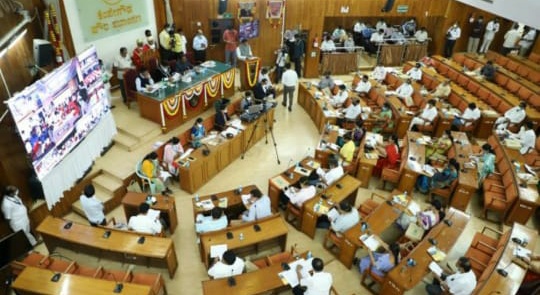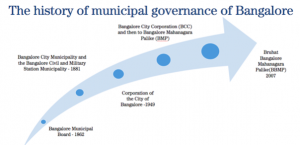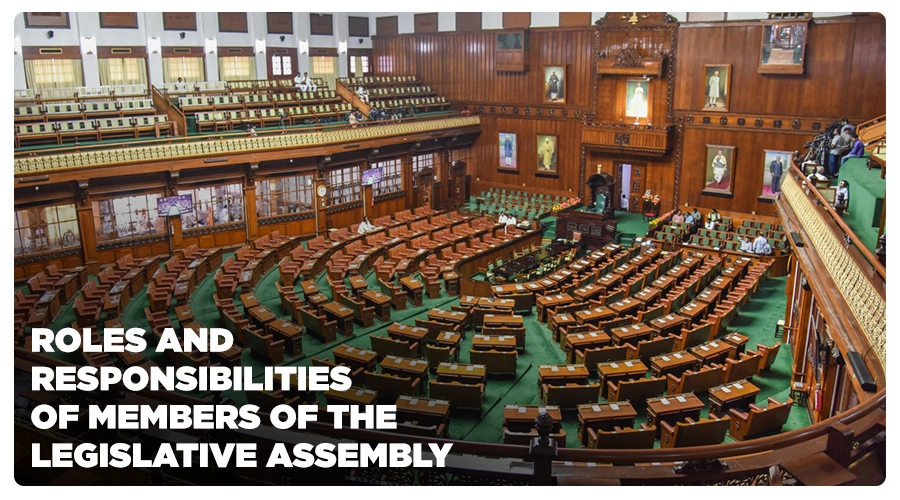Background
The Constitution of India has made detailed provisions for ensuring the protection of democracy in Parliament and in State Legislatures. But it did not provide adequate powers for the local self-government/ governance leading to democracy not being stable in municipal governance.
74th Amendment of the Constitution
The Bill as reported by the Joint Parliamentary Committee was taken up for consideration and passed by the Lok Sabha on 22nd December 1992 and by the Rajya Sabha on 23rd December 1992 and it received the assent of President on 20th April 1993. It was published in the Government Gazette on 20th April 1993 as the “Constitution (Seventy Fourth Amendment) Act, 1992”.
Local Government, that is to say, the constitution and powers of municipal corporations, improvement trusts, district boards, mining settlement authorities, and other local authorities for the purpose of local self-government or village administration.
The Constitution (Seventy Fourth Amendment) Act, 1992 – the main provisions introduced by the above Act are as under:-
(i) Constitution of Municipalities – It provides for constitution of 3 types of municipalities depending upon the size and area namely:-
(a) Nagar Panchayat for an area in transition from rural to the urban area
(b) Municipal Council for the smaller urban area
(c) Municipal Corporation for a larger urban area.
Demographics and other conditions, which are determining factors for constituting a particular type of municipality differ a great deal from one State to another.
History of BBMP
Bangalore became a corporation in 1949 and the rest of the cities of Karnataka were municipalities. Now, Bruhat Bangalore Mahanagara Palike (BBMP) area is an amalgamation of 7 CMCs, 1 TMC surrounding the erstwhile Bangalore Mahanagara Palike (BMP) and 110 intervening villages. The geographical area of the BBMP with all the newly added areas is 709.53 Sq.Km. Mayor is elected for a period of one year. Main functions – preside over every meeting of the Corporation, general powers of inspection, and may give direction to the Commissioner with regard to the implementation of any resolution of the Corporation. Deputy Mayor steps into the office if the office is vacant or if the Mayor is absent for over 8 days continuously. Deputy Mayor shall discharge such functions as may be delegated to him by the Mayor. Standing Committees for the Bruhat Bangalore Mahanagara Palike has specific functions to perform as mandated by the KMC Act:- (a) the Standing Committee for Taxation and Finance; Each of the above standing committees has a set of mandates and link has more details. Overview of Administrative Setup in BBMP Commissioners of BBMP The Government appoints suitable state civil service officers for the posts of: All these officers shall be reporting to the Commissioner, BBMP KMC Act amendment provides for a to provide for the Constitution of Area Sabhas and Ward Committees. Entrusting functions and duties to the Area Sabha and Ward Committees and There is One Ward Committee per Ward. Rule 3 – Ward committee shall recommend to the corporation for disciplinary action on those officers who fail to carry out resolutions of the Ward Committee. All money received by or on behalf of the corporation by or under this Act or any other law, all taxes, tolls and other imposts, fines, fees, penalties paid to or levied by it under this Act, all proceeds of land or other property sold by the corporation and all rents accruing from its land or property and all interests, profits and other sums of money accruing by gifts or transfers from the Government or private individuals or otherwise shall constitute the corporation fund Sources of BBMP Revenue KMC Act Section 166 – Every year there will be a budget prepared by the commissioner. The cash balance should not be less than 1,00,000, according to the Act, it cannot show a deficit. As the area and population of the BBMP limits are increasing, administrative issues have increased and unmanageable for a single Corporation. To make the BBMP more manageable, a restructuring committee has recommended “The Greater Bengaluru Governance Draft Bill”. The bill provides for that provides for a three-tier governance structure; Greater Bengaluru Authority (GBA) at the city level, multiple corporations, and empowered ward committees. Salient points of the bill: [Source]
Bangalore City Corporation Act
Karnataka Municipalities Act [KMC] was introduced in 1976 expanded the mandate to all other cities in the state.
Bangalore Mahanagara Palike (BMP) had 3 zones and 100 wards, 15 MLA constituencies
The composition of BMP and other constituent bodies of BBMP in terms of wards and population as per the 2001 Census.Introduction to Bruhat Bengaluru Mahanagara Palike (BBMP)
BBMP composition and Functions
Functionaries:
(b) the Standing Committee for Public Health;
(c) the Standing Committee for Town Planning and Improvement;
(d) the Standing Committee for Major Public Works;
(e) the Standing Committee for Ward Level Public Works;
(f) the Standing Committee for Accounts;
(g) the Standing Committee for Education;
(h) the Standing Committee for Social Justice;
(i) the Standing Committee for Appeals;
(j) the Standing Committee for Horticulture;
(k) the Standing Committee for Markets;
(l) the Standing Committee for Establishment and Administrative Reforms.Administrative Section:
BBMP Departments
Citizen Participation:
institutionalizing community/citizen participation, in cities with more than 3 lakhs population
The composition of Ward Committees
10 members to be nominated by the Corporation (at least 2 SC/ST, 3 women, 2 from registered associations).
Officer of an appropriate rank designated as Secretary/Convener to provide all administrative assistance
Ward committee meetings
Functions and duties of Ward
Rule 5 – If chairman fails to call a meeting in a month, one-third of the ward committee members can requisition the chairman in writing to convene a meeting calling attention to the fact that a monthly meeting is due or specifying the purpose for which a meeting is necessary
Rule 8 – Establishment of a Disaster Management Cell at ward levelCorporation Fund
BBMP Budget Making Process:
Estimates and expenditure, income prepared by the commissioner, provision to be done by January 15th, and submitted to the standing committee. This document is presented before the Tax and Finance Standing Committee.
Standing Committee during the review they call the various bureaucrats and officers and other standing committees for the clarifications.
The copies of the standing committee report will go to all 198 councilors for them to prepare.
Usually, by 1st week of February, Standing Committee Chairman will present before the council and debate, deliberate on the estimates, incomes, etc
The corporation can send it back to the standing committee for amendments if any within an estimated time.
Clarifications and revisions should be done before the budget is adopted by the council
The final budget should be finally, 21 days before March 31st should be passed and sent to the government for approval. Based on the estimates, and modifications if any, the state government should pass it within 60 days or it will be deemed accepted. Once approved by the government, it will be sent to the corporation to be implemented from 1st April [Financial Year]
BBMP Restructuring – Future (Vision)







